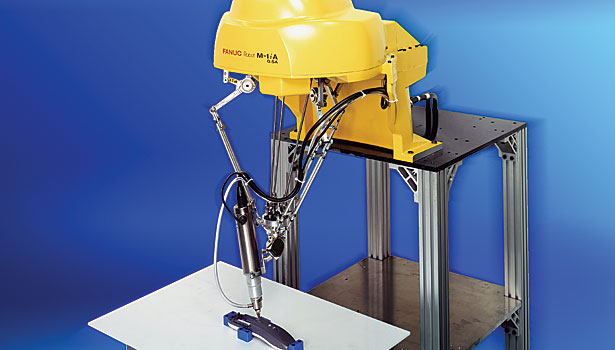Robotic screwdriving offers numerous advantages to manufacturers, such as flexibility and repeatability. However, it’s easy to underestimate the requirements of automation. Sometimes, engineers specify the wrong type of robot or overlook parts feeding issues.
“Several issues that need to be addressed before we [will] see more widespread use of robotic screwdriving equipment,” claims Kevin Buckner, design engineer at Design Tool Inc. “These issues include cost, robot design, training and culture. Obviously, as robot costs decrease, their use will become more prevalent. Also, as robot designs increase inertial load levels, the fastener size vs. cost relationship will become more favorable.
“Increased exposure of engineering students to mechatronics [in college] will encourage the use of robots in assembly applications,” Buckner points out. “Finally, operators must accept and embrace the use of robots in assembly operations as a necessity for companies to remain competitive in a global economy. Manual assembly operations will always be necessary in some applications, but robotic screwdriving applications will continue to increase in the future.”
“The biggest concern with robotic screwdriving is part placement accuracy,” adds Lisa Maitre, senior engineering manager at Toyota North America. “The robot is repeatable and will move to the same location each time. But, it can be difficult to start a bolt or screw if it is not perfectly aligned. It can be easily cross-threaded or damaged. The part needs to be fixtured in place accurately or a vision system [must be] used to locate the components to be able to ensure good engagement.”
“Applying robotic technology to assemble inherently imperfect parts that require active operator alignment, such as multiple bend sheet metal appliance covers, can be a big mistake,” says Jarrod Neff, marketing manager at Visumatic Industrial Products Inc. “High-tolerance components that lack adequate locating features to aid in stack up can set an engineer up for failure.
“A commitment to designing products which balance aesthetics with the physical mechanical features required for readily automatable fastening will increase a manufacturer’s ability to reap the benefits of robotic screwdriving,” explains Neff.
“The robot cannot fix an application’s design issues,” adds Patrick Laughter, owner of LAUCO Engineering. “If a hole location is not repeatable or is sized incorrectly; if the part placement is not always the same; if the camera data is incorrect, the robot cannot fix those issues. If the screwdriver is not sized correctly or the screw feed design is not consistent, the robot cannot fix those issues either.”
Undersizing or oversizing a screwdriving robot is another mistake to avoid. “The robot reach, payload and controls have to be suitable for the application,” notes Laughter. “Can the robot handle not just the movement of the screwdriver head, but associated cables and tubing? Can it also maintain its position throughout the complete screwdriving and final torque requirements?”
Boris Baeumler, applications engineer at DEPRAG Inc., agrees that undersizing a robot can cause problems with screwdriving applications. “It’s easy to underestimate the requirements of screwdriving,” he explains. “Generally, it’s a high-payload and high-speed point-to-point application.
“Engineers should also consider the ability of the existing maintenance staff,” says Baeumler. “All equipment will require support at some point. If robots are new to a facility, personnel should be properly trained.”


